
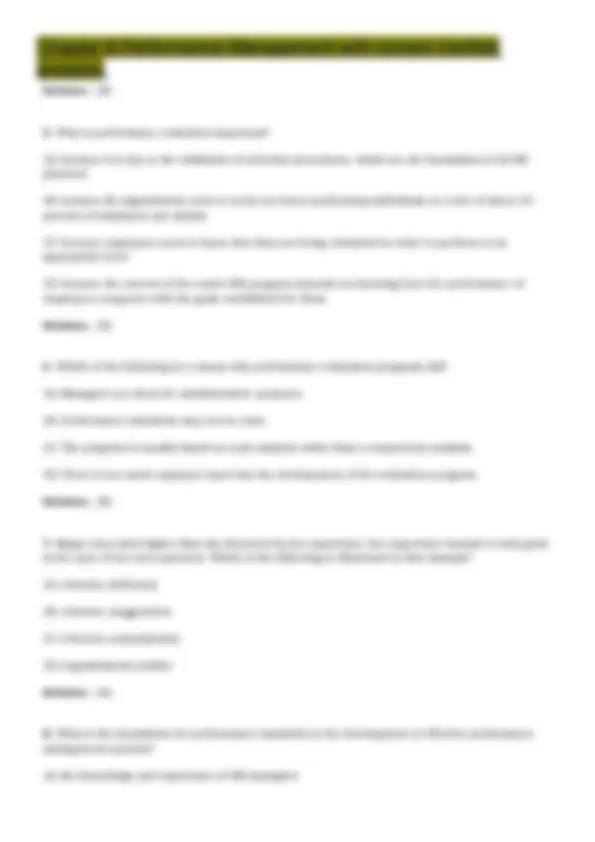

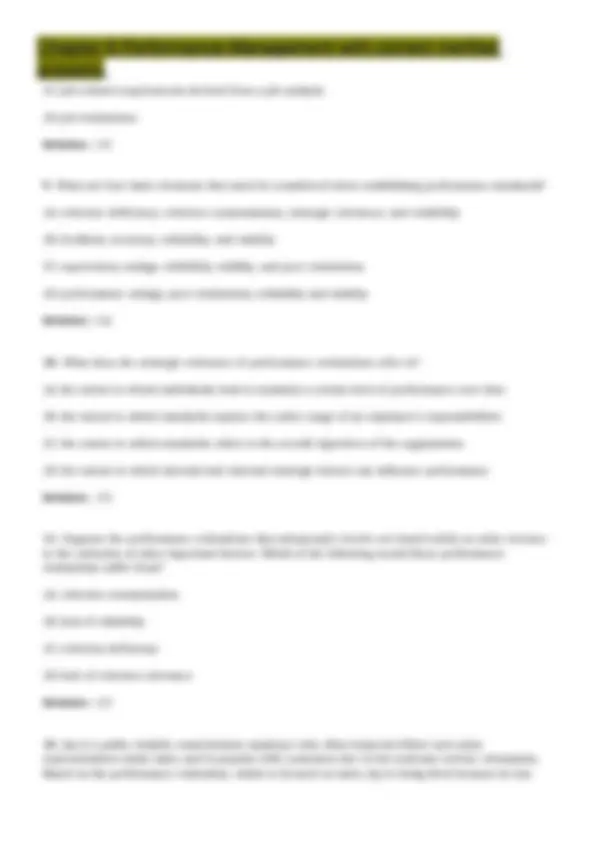

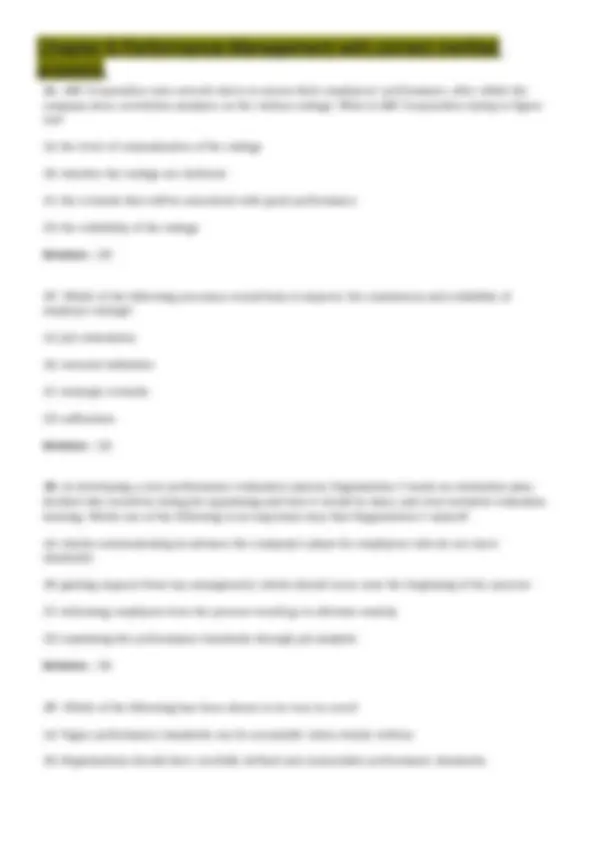

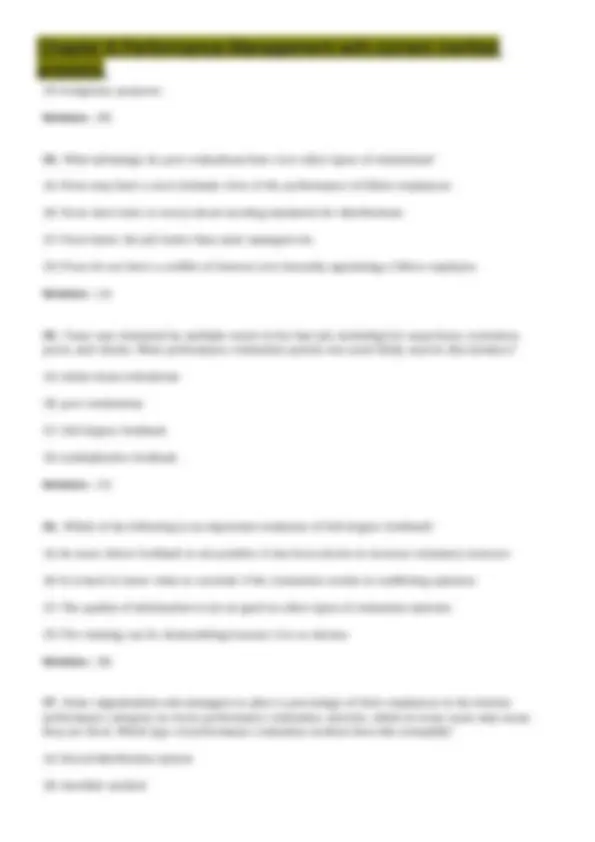

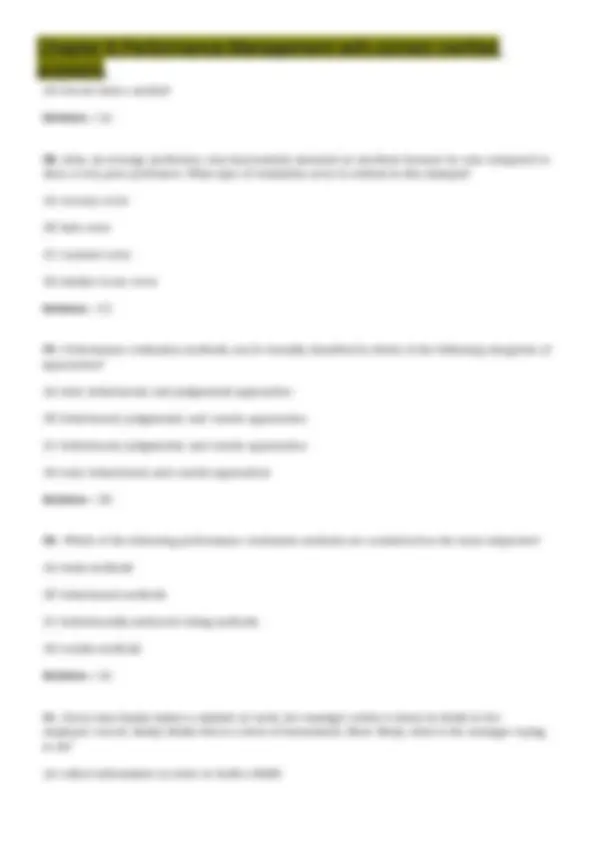

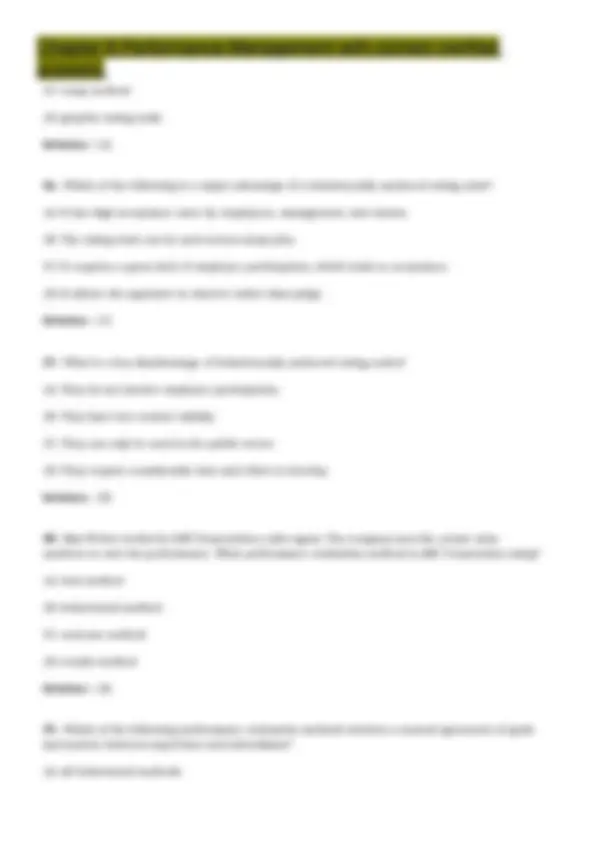

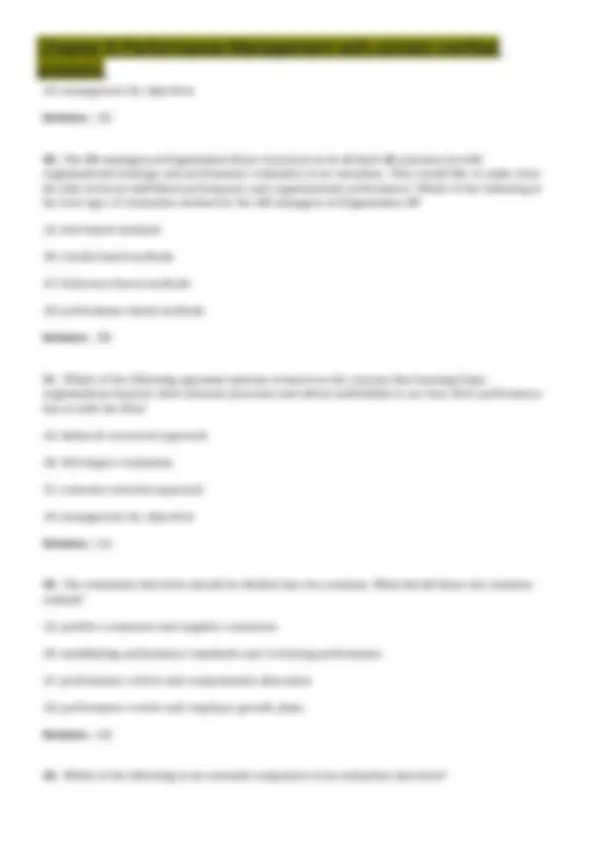

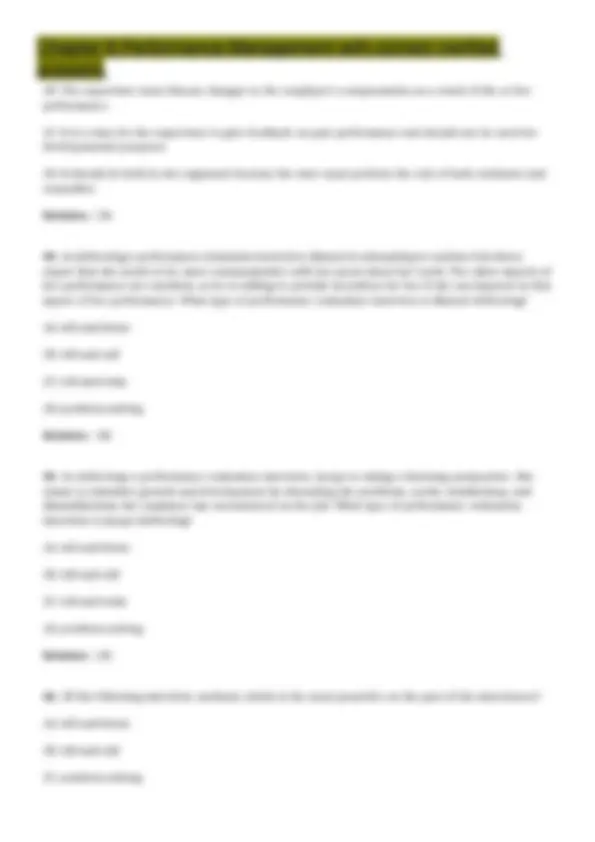

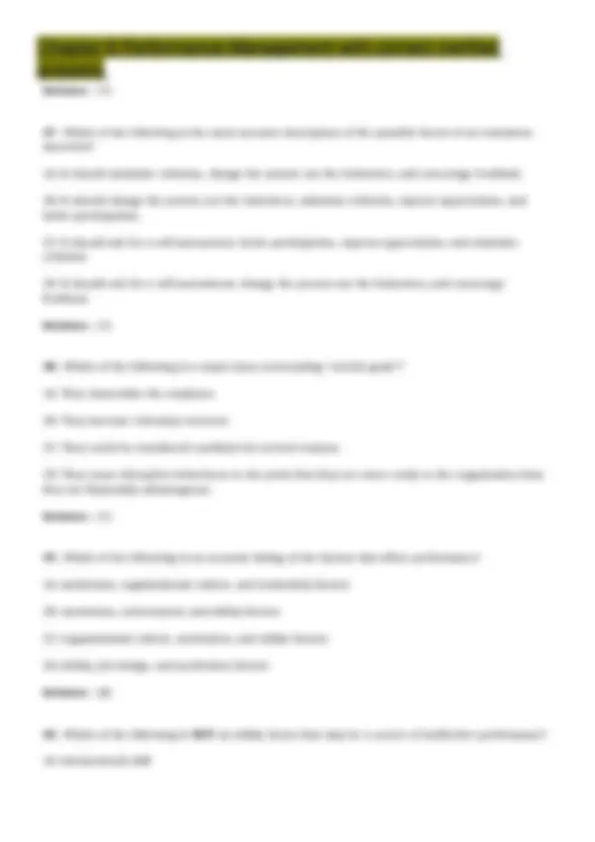

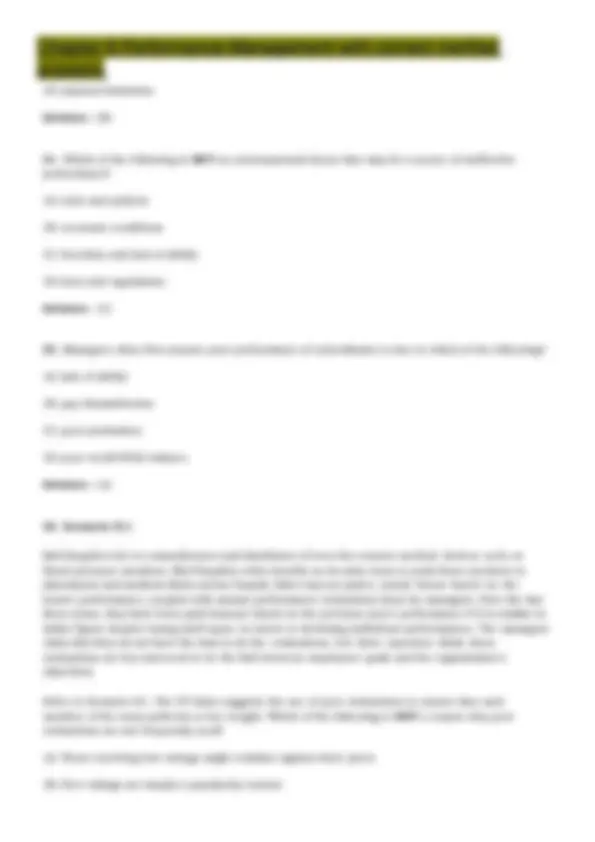

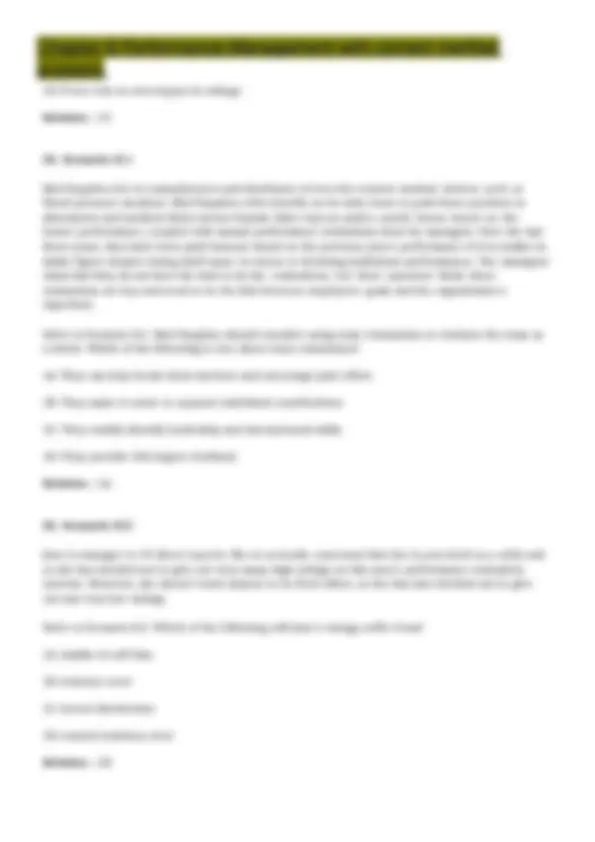

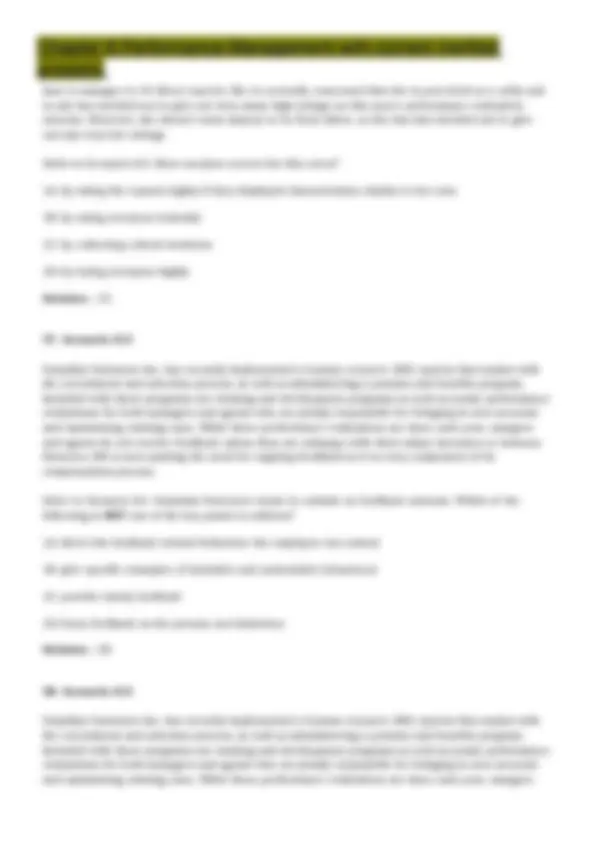

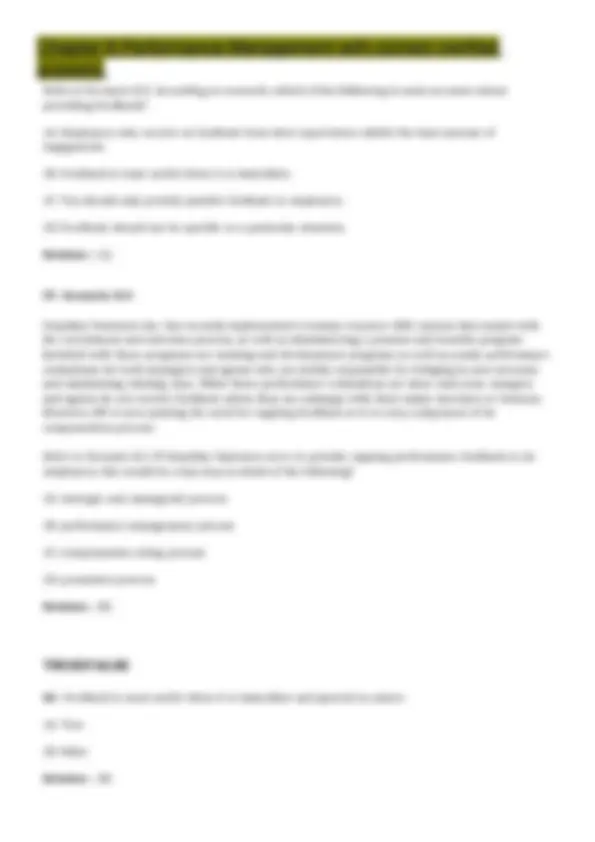

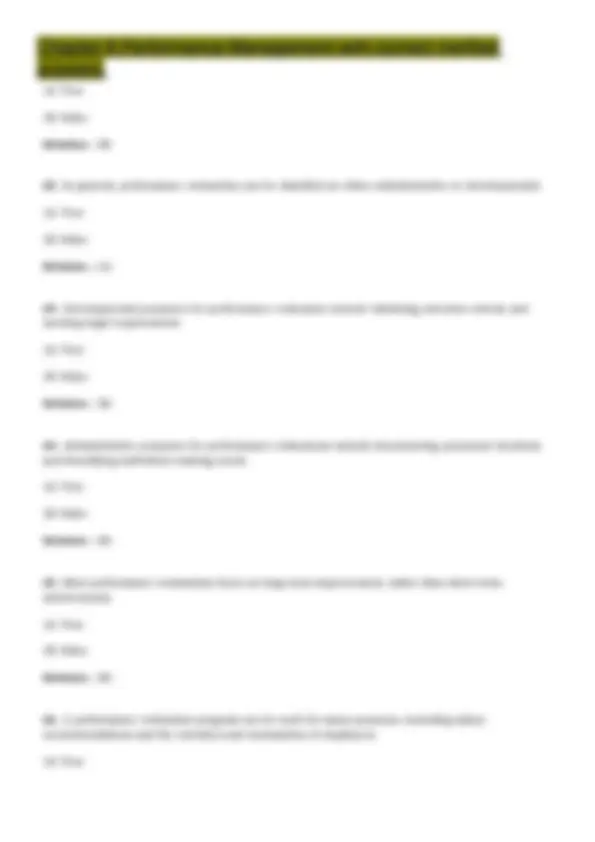

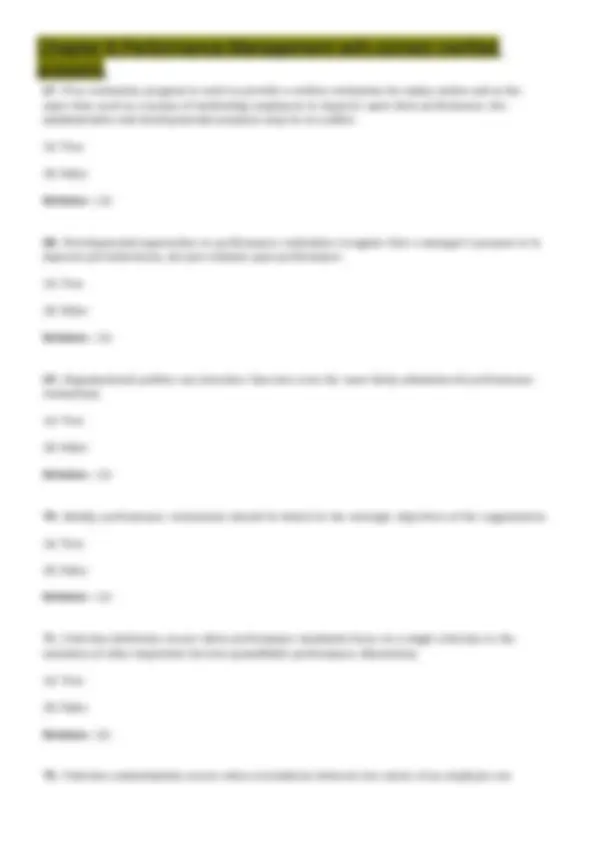

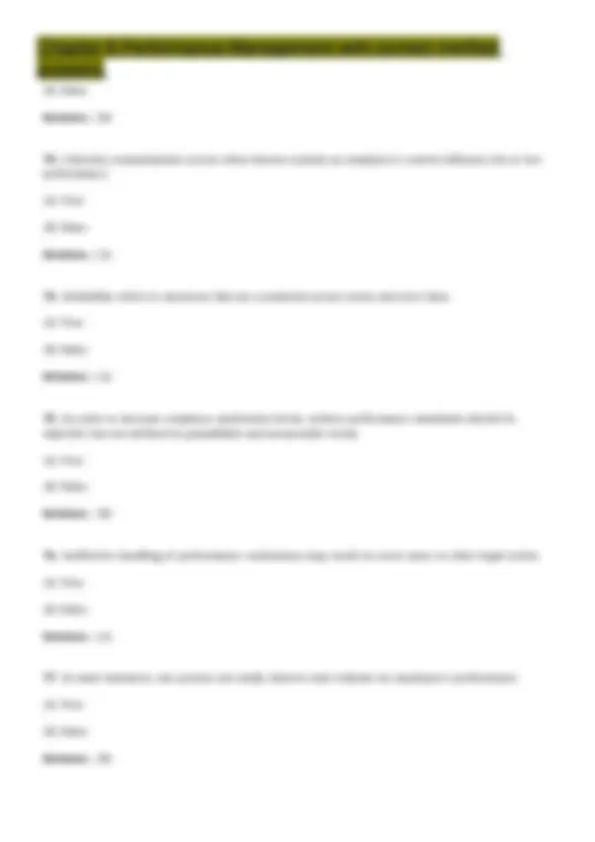

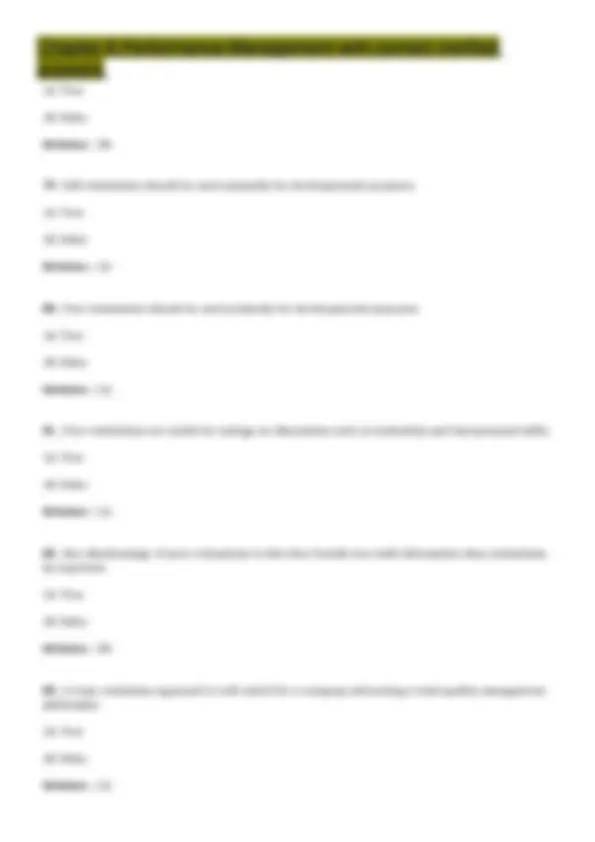
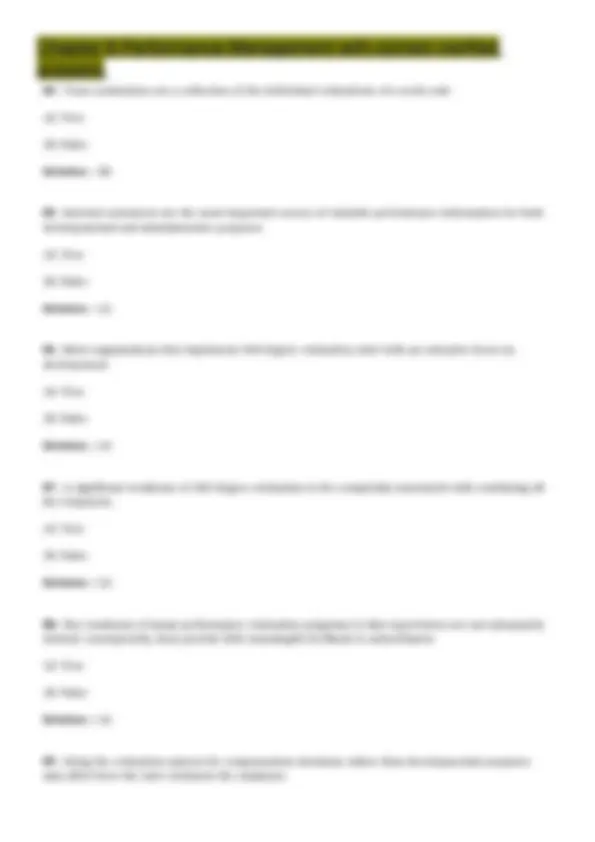

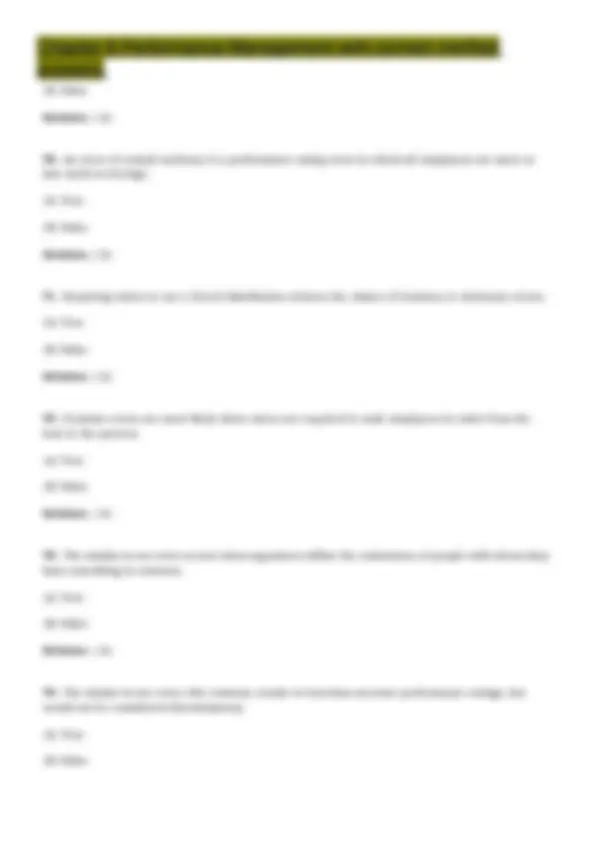

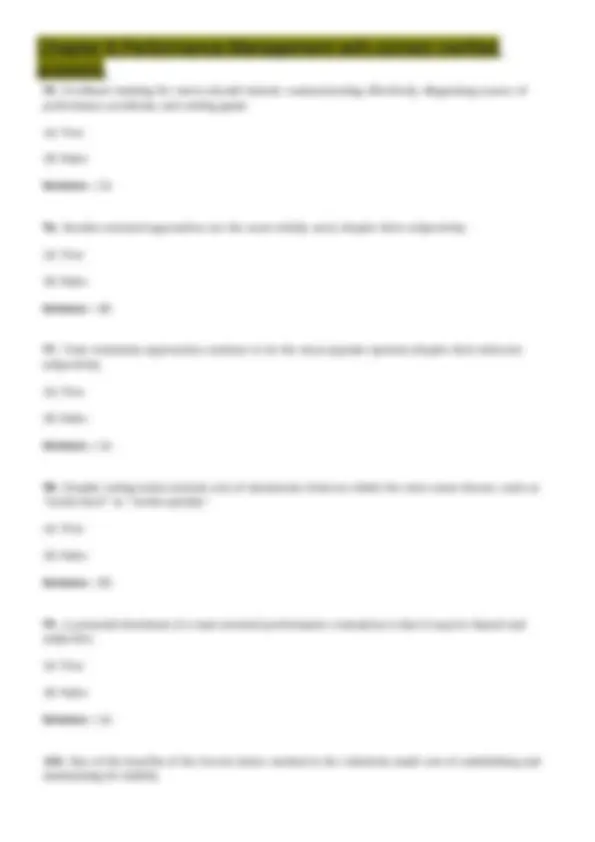

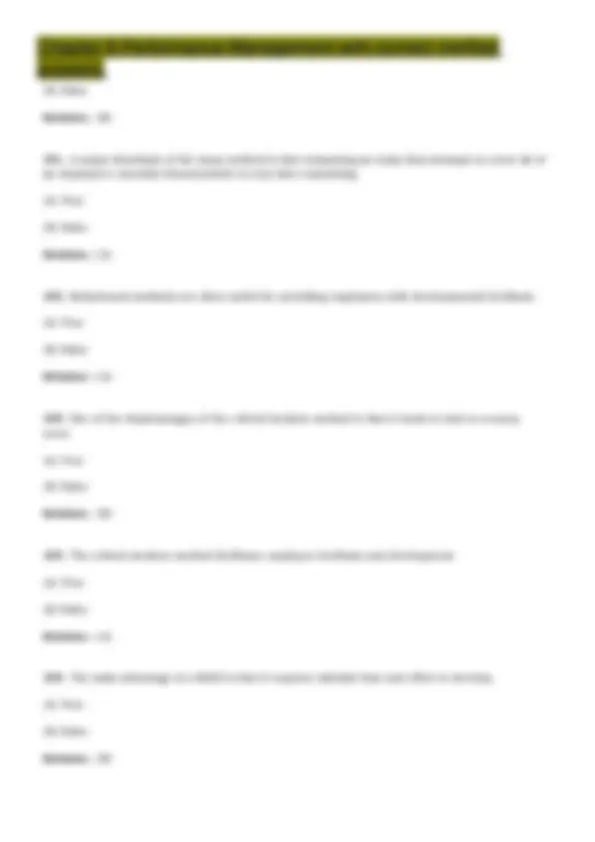

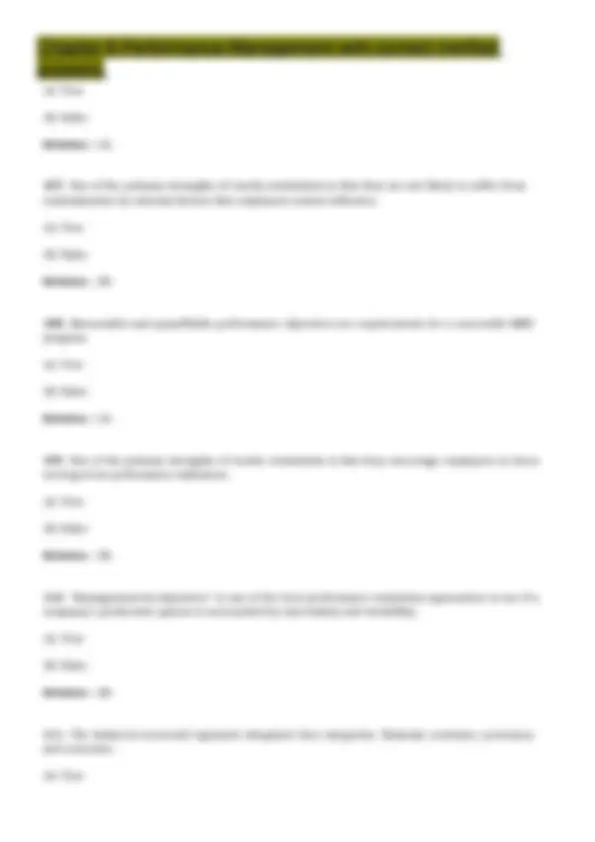

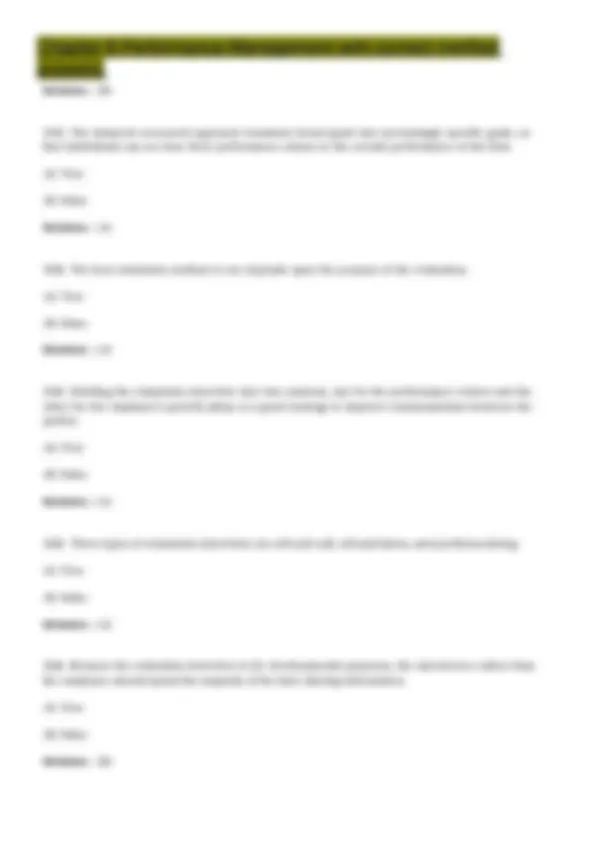

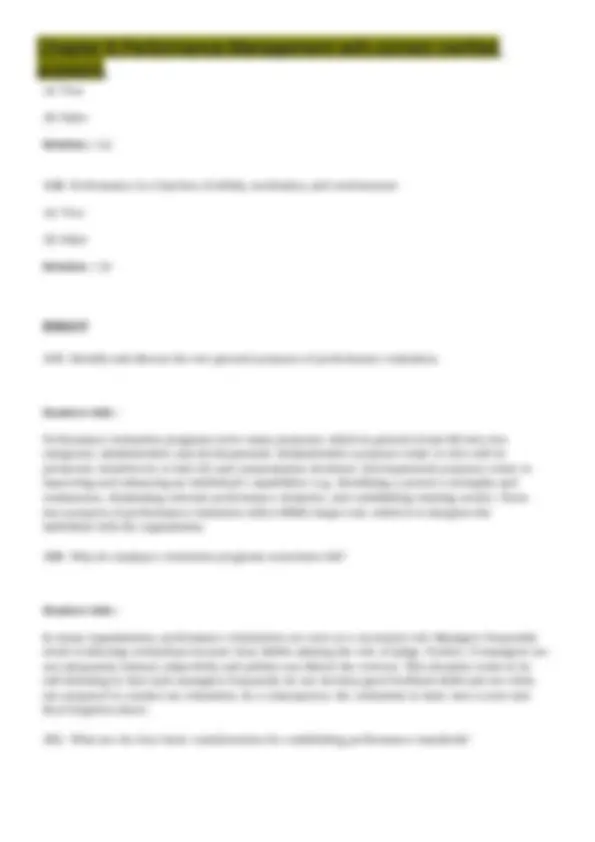

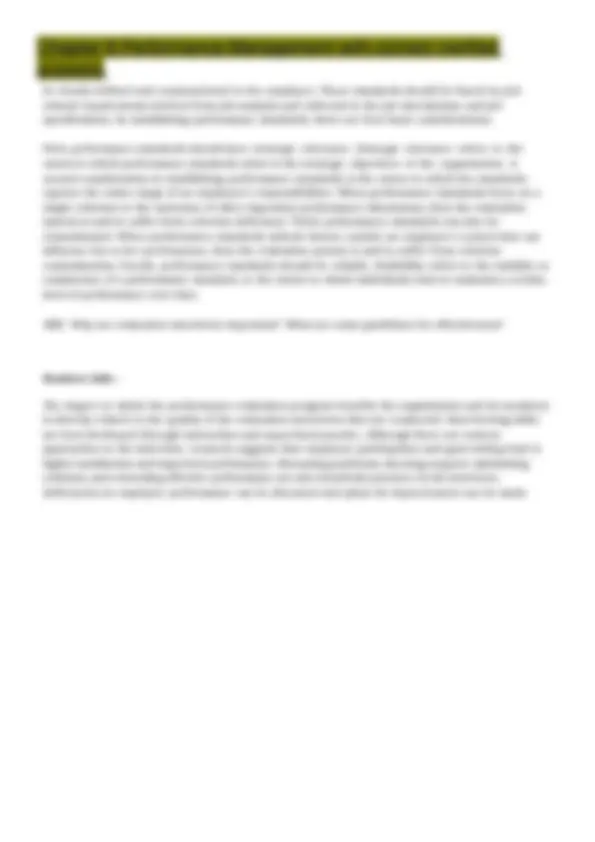


Study with the several resources on Docsity

Earn points by helping other students or get them with a premium plan


Prepare for your exams
Study with the several resources on Docsity

Earn points to download
Earn points by helping other students or get them with a premium plan
Community
Ask the community for help and clear up your study doubts
Discover the best universities in your country according to Docsity users
Free resources
Download our free guides on studying techniques, anxiety management strategies, and thesis advice from Docsity tutors
This document explores the key purposes and considerations behind performance evaluations in organizations, covering administrative, developmental, and strategic aspects. It delves into the challenges of performance evaluation systems, such as criterion deficiency and rater bias, and discusses methods to improve the consistency and reliability of employee ratings. The document also examines the differences between various evaluation approaches and the tradeoffs between subjective and objective measures, providing a comprehensive understanding of effective performance management systems.
Typology: Exams
1 / 56

This page cannot be seen from the preview
Don't miss anything!

















































1. What is the key purpose of performance evaluations when they are used for pay-for-performance decisions? (A) signalling purpose (B) symbolic purpose (C) administrative purpose (D) developmental purpose Solution : (C) 2. How often should performance feedback be delivered? (A) It should be done at least annually. (B) It depends on the organizational culture, industry, and supervisor's style. (C) It should be done at regular intervals-the more frequent the better. (D) It should be an ongoing, regular part of supervisor-subordinate interactions. Solution : (D) 3. Which of the following is NOT a developmental purpose of performance evaluation? (A) meeting legal requirements (B) providing performance feedback (C) improving communication (D) identifying an individual's strengths and weaknesses Solution : (A) 4. Which of the following are the two primary purposes of performance evaluations? (A) informative and developmental purposes (B) administrative and developmental purposes (C) administrative and informative purposes
(D) managerial and administrative purposes
(B) feedback from customers
(C) job-related requirements derived from a job analysis (D) job evaluations Solution : (C)
9. What are four basic elements that must be considered when establishing performance standards? (A) criterion deficiency, criterion contamination, strategic relevance, and reliability (B) feedback, accuracy, reliability, and validity (C) supervisory ratings, reliability, validity, and peer evaluations (D) performance ratings, peer evaluations, reliability and validity Solution : (A) 10. What does the strategic relevance of performance evaluations refer to? (A) the extent to which individuals tend to maintain a certain level of performance over time (B) the extent to which standards capture the entire range of an employee's responsibilities (C) the extent to which standards relate to the overall objectives of the organization (D) the extent to which internal and external strategic factors can influence performance Solution : (C) 11. Suppose the performance evaluations that salespeople receive are based solely on sales revenue to the exclusion of other important factors. Which of the following would these performance evaluations suffer from? (A) criterion contamination (B) lack of reliability (C) criterion deficiency (D) lack of criterion relevance Solution : (C) 12. Jay is a polite, helpful, conscientious employee who often helps his fellow auto sales representatives make sales, and is popular with customers due to his customer service orientation. Based on his performance evaluation, which is focused on sales, Jay is being fired because he has
(A) criterion contamination (B) lack of reliability (C) criterion deficiency (D) lack of relevance Solution : (C)
13. If a performance standard is found to be stable or consistent over time, it is said to be which of the following? (A) reliable (B) relevant (C) steady (D) valid Solution : (A) 14. Farah, a waitress at OMG Restaurant, was appraised only on the quality of the food she delivered to the customers. Which type of problem does this evaluation illustrate? (A) criterion deficiency (B) criterion reliability (C) reliability (D) criterion contamination Solution : (D) 15. Suppose the performance evaluations that delivery drivers receive are partially influenced by the fact that some drivers operate in areas where there are major traffic problems while others operate in areas with few traffic problems. Which of the following would these performance evaluations suffer from? (A) criterion contamination (B) lack of relevance (C) lack of reliability (D) rater bias
Solution : (A)
(C) While performance standards should be somewhat specific, there should be room for individual interpretation.
(D) Descriptions of traits such as attitude and cooperation are acceptable performance standards. Solution : (B)
20. What is the most important thing an organization can do to ensure that a performance evaluation process achieves standards that are legally defensible if challenged in courts? (A) Use calibration and train the managers on how to deliver feedback. (B) Make sure the tool is reliable. (C) Base the standards on a sound job analysis and make sure all involved know what the standards are. (D) Make sure managers are not biased in their delivery of evaluation feedback. Solution : (C) 21. Why are self-evaluations better for developmental versus administrative purposes? (A) because the evaluations are inflated because employees tend to rate themselves highly (B) because the evaluations are accurate (C) because employees prefer using them for developmental purposes (D) because legal challenges would be difficult to successfully defend Solution : (A) 22. Managers tend to be more open to the use of subordinate evaluations when they are used for which of the following? (A) promotional purposes (B) regulatory purposes (C) administrative purposes (D) developmental purposes Solution : (D) 23. Which of the following are peer evaluations best suited for? (A) administrative purposes (B) developmental purposes
(D) budgetary purposes Solution : (B)
24. What advantage do peer evaluations have over other types of evaluations? (A) Peers may have a more intimate view of the performance of fellow employees. (B) Peers don't have to worry about meeting standards for distributions. (C) Peers know the job better than most managers do. (D) Peers do not have a conflict of interest over honestly appraising a fellow employee. Solution : (A) 25. Tracy was evaluated by multiple raters in her last job, including her supervisor, customers, peers, and clients. What performance evaluation system was most likely used in this instance? (A) whole-team evaluations (B) peer evaluations (C) 360-degree feedback (D) multiplicative feedback Solution : (C) 26. Which of the following is an important weakness of 360-degree feedback? (A) In cases where feedback is not positive, it has been shown to increase voluntary turnover. (B) It is hard to know what to conclude if the evaluation results in conflicting opinions. (C) The quality of information is not as good as other types of evaluation systems. (D) The training can be demoralizing because it is so intense. Solution : (B) 27. Some organizations ask managers to place a percentage of their employees in the bottom performance category on every performance evaluation exercise, which in some cases may mean they are fired. Which type of performance evaluation method does this exemplify? (A) forced-distribution system (B) checklist method
(C) percent method
(B) substantiate her termination in case Sandy files a complaint
(C) evaluate her performance (D) collect critical incidents Solution : (D)
32. Which of the following methods require an appraiser to rate the degree to which the employee possesses a trait or characteristic? (A) behaviourally anchored rating scale (B) graphic rating scale (C) forced-choice method (D) critical incident method Solution : (B) 33. The primary objective for performance evaluations at ABC Corporation is to give employees developmental feedback. Which of the following evaluation methods should the HR manager use? (A) trait methods (B) behavioural methods (C) results methods (D) attitudinal methods Solution : (B) 34. Which of the following uses critical incidents as examples at different points along the scale? (A) the global rating (B) the mixed-standard scale (C) dimensional rating (D) the behaviourally anchored rating scale Solution : (D) 35. In order to keep track of employees' performance, which of the following performance evaluation methods would a supervisor use a log or diary for? (A) critical incidents method
(C) essay method (D) graphic rating scale Solution : (A)
36. Which of the following is a major advantage of a behaviourally anchored rating scale? (A) It has high acceptance rates by employees, management, and unions. (B) The rating scale can be used across many jobs. (C) It requires a great deal of employee participation, which leads to acceptance. (D) It allows the appraiser to observe rather than judge. Solution : (C) 37. What is a key disadvantage of behaviourally anchored rating scales? (A) They do not involve employee participation. (B) They have low content validity. (C) They can only be used in the public sector. (D) They require considerable time and effort to develop. Solution : (D) 38. Max Weber works for ABC Corporation a sales agent. The company uses his actual sales numbers to rate his performance. What performance evaluation method is ABC Corporation using? (A) trait method (B) behavioural method (C) outcome method (D) results method Solution : (D) 39. Which of the following performance evaluation methods involves a mutual agreement of goals and metrics between supervisor and subordinate? (A) all behavioural methods
(B) productivity measures (C) forced distribution